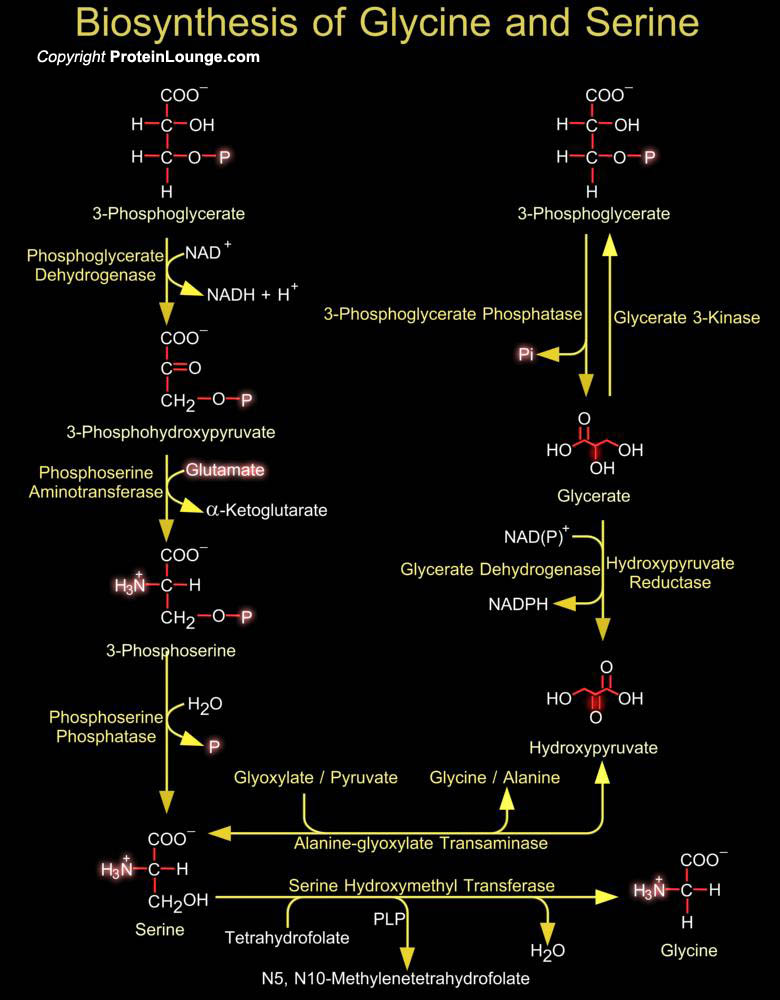
Intermediates in energy production pathways such as glycolysis and the Krebs cycle are commonly the starting point for the biosynthesis of amino acids. The biosynthesis of serine and glycine constitute a major metabolic pathway that plays a central role in the formation of other amino acids, nucleic acids and phospholipids. Serine an ɑ-amino acid used in the biosynthesis of proteins can be synthesized in the human body under normal physiological circumstances, making it a nonessential amino acid. It contains an α-amino group a carboxyl group, and a side chain consisting of a hydroxymethyl group, classifying it as a polar amino acid. Glycine is also an amino acid that with a single hydrogen atom as its side chain. It is one of the proteinogenic amino acids and[..]
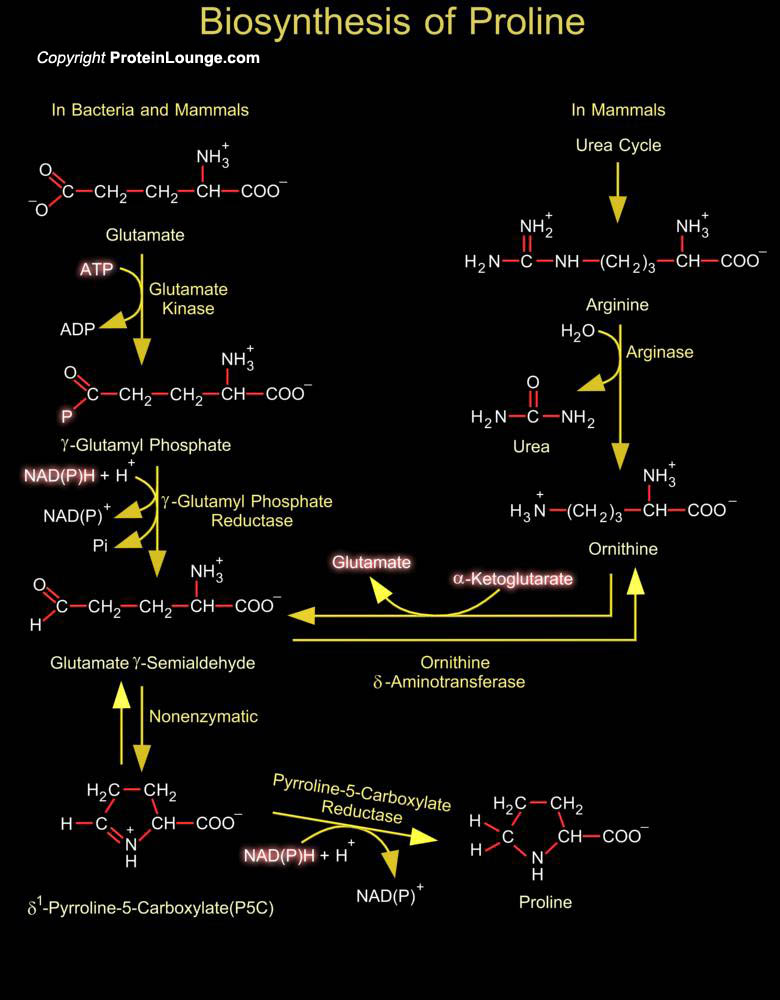
Proline is unique in having a cyclic structure with its side chain connected to the amino group to create a secondary amine. As a consequence of its cyclic structure, Proline constrains the structure of proteins where it occurs, disrupting Alpha-helices. Isomerization between the cis and trans forms of Proline in proteins is isomerized by peptidyl-prolyl isomerases like the cyclophilins that contribute to protein folding and are components of signal transduction pathways (Ref.1). Proline is derived from glutamate. Its biosynthesis begins with the ATP-driven phosphorylation and reduction of the carboxyl side chain of glutamate. The Gamma-carboxylate group of glutamate is activated by phosphorylation with ATP to from a Gamma-Glutamyl Phosphate intermediate. The[..]
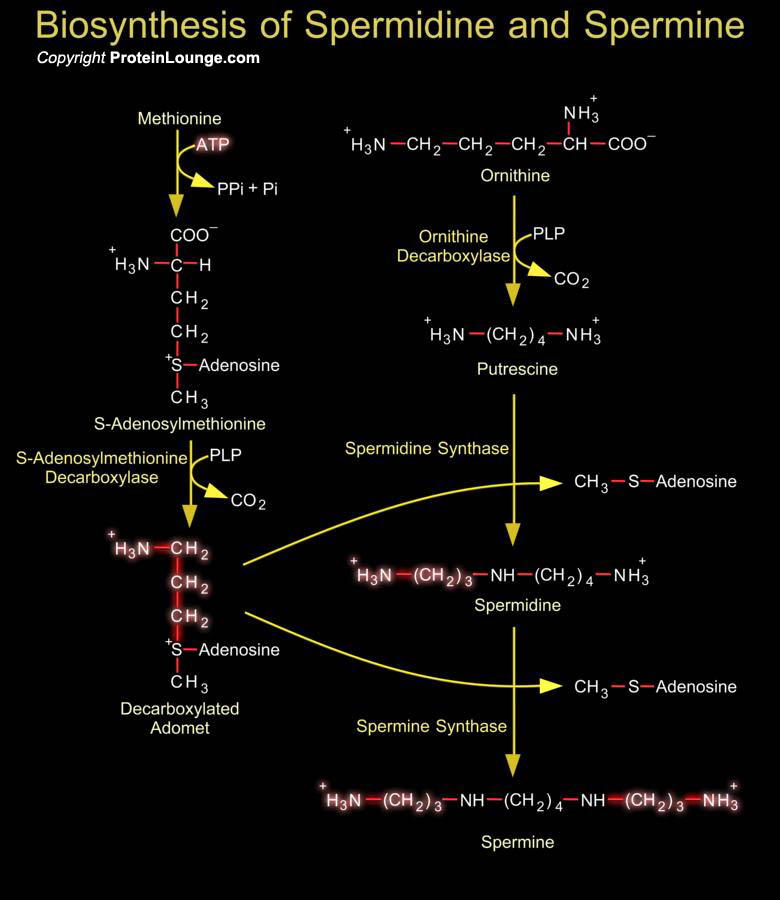
The polyamines Spermidine and Spermine are naturally occurring ubiquitous polycations involved in the regulation of cell growth, differentiation, apoptosis and progression through the cell cycle. (Ref.1). Cellular polyamine levels are regulated by multiple pathways such as synthesis from amino acid precursors, cellular uptake mechanisms that salvage polyamines from diet and intestinal microorganisms, as well as stepwise degradation and efflux (Ref.2). Putrescine and S-Adenosylmethionine are the obligate precursors for Spermidine and Spermine. In mammals Putrescine is formed by decarboxylation of Ornithine by the action of Ornithine Decarboxylase. Ornithine, one of the starting materials for polyamine biosynthesis, is derived from the amino acid Arginine as part of[..]
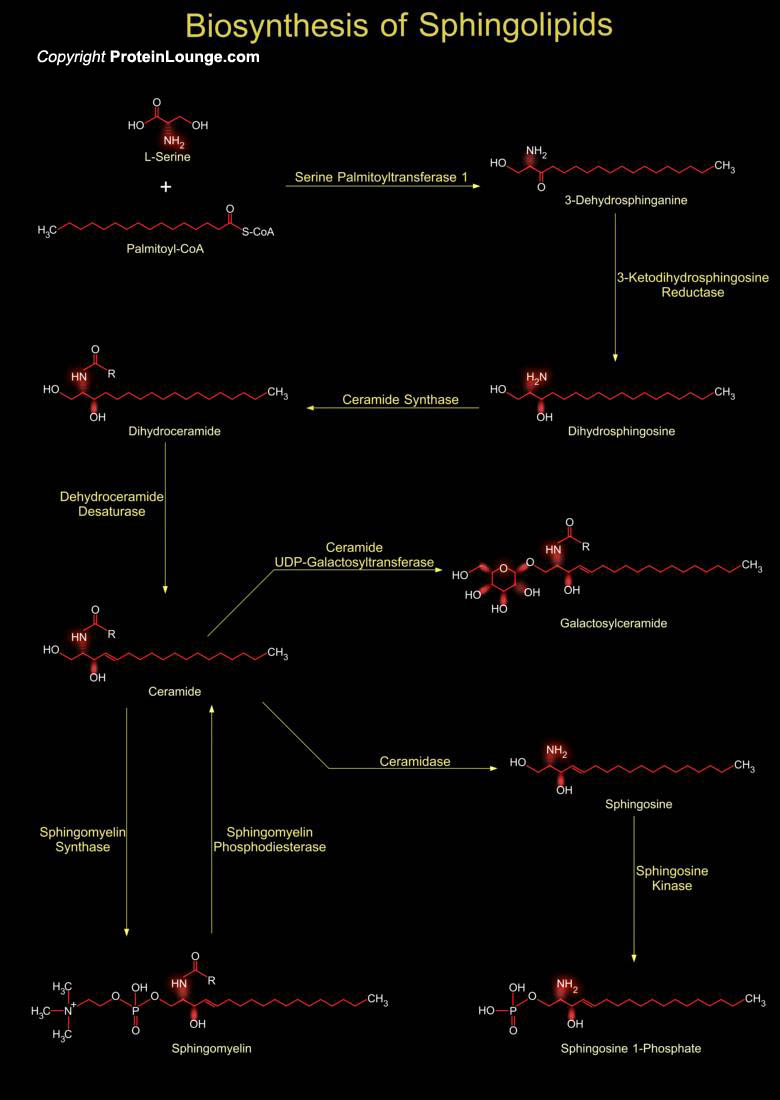
Sphingolipids structural components of the cell membrane play a key role in the regulation of several cellular processes. Cell signaling related to sphingolipids induces apoptosis, cell cycle arrest and cell growth. There are multiple bioactive sphingolipids metabolites which include ceramide, sphingosine-1-phosphate, sphingosine, and sphingomyelin which may act as secondary messengers in cellular signal transduction pathways. Sphingolipids are abundant components of the myelin sheath which protects and insulates cells of the central nervous system. Sphingolipids are also found in plant cells and yeast and are derivatives of the base sphingosine (phytosphingosine in plants). Sphingolipids are a class of lipids with two non-polar tails (sphingosine and fatty[..]
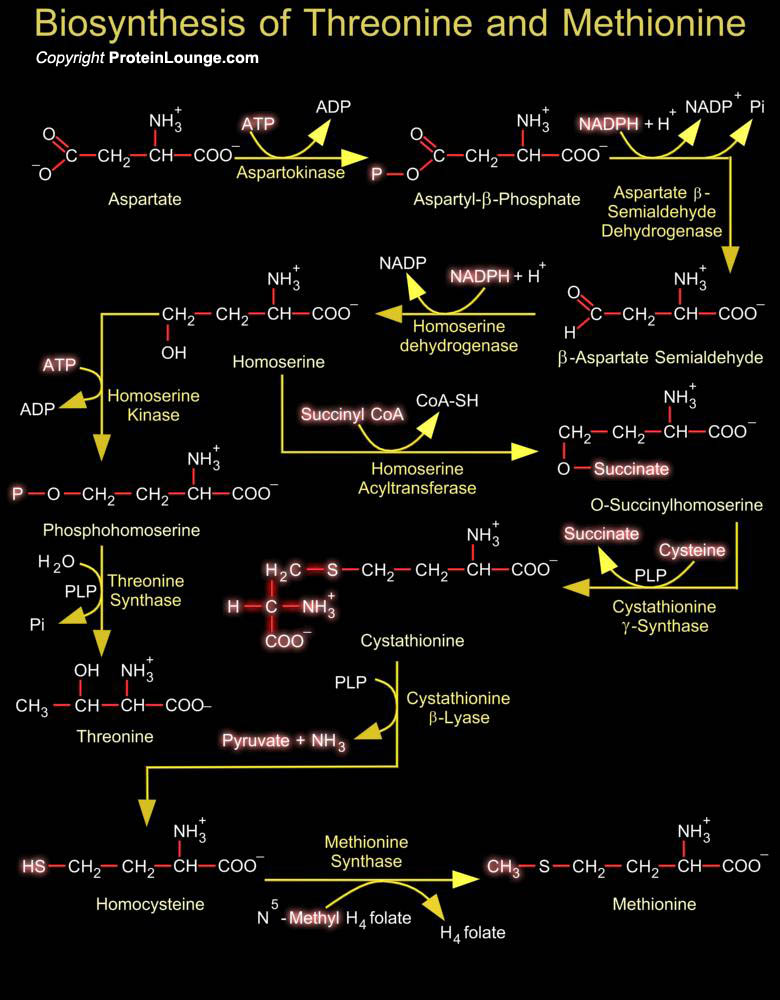
Threonine is an alcohol-containing amino acid that can not be produced by metabolism and must be taken in the diet. This amino acid plays an important role along with Glycine and Serine in Porphyrin metabolism. Threonine is incorporated into proteins and enzymes at a molar rate of 6 percent compared to the other amino acids. Methionine is the only sulfur-containing amino acid that is essential for mammals and must therefore be derived entirely from the diet. Methionine is an important amino acid that helps to initiate translation of mRNA (messenger RNA) by being the first amino acid incorporated into the N-terminal position of all proteins. This sulfur-containing amino acid is also the source of sulfur for Cysteine in animals and man. In that regard, Methionine is[..]
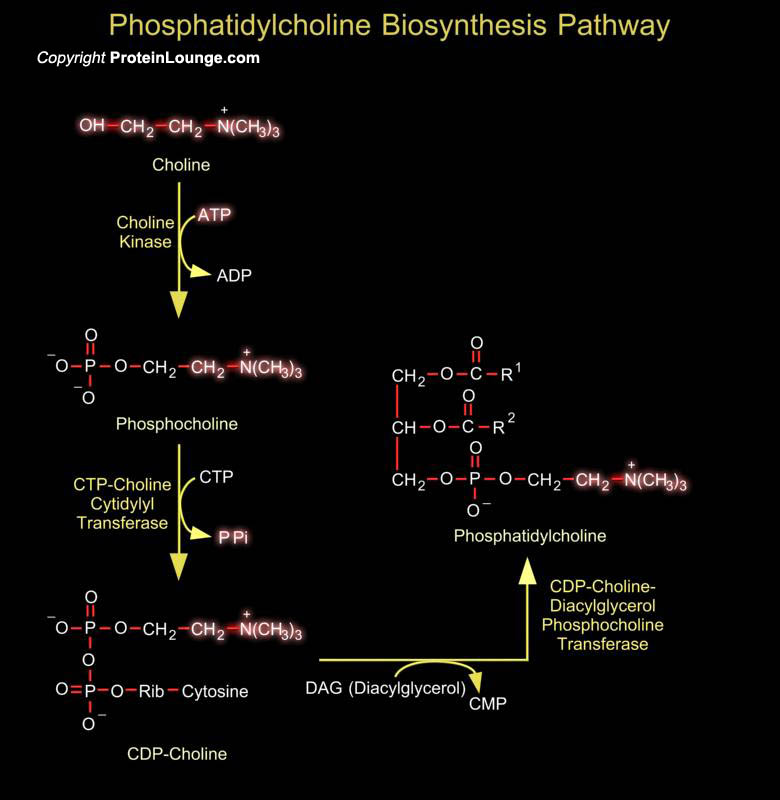
Phosphatidylcholine (once given the trivial name 'lecithin') is usually the most abundant phospholipid in animal and plants, often amounting to almost 50% of the total, and as such it is the key building block of membrane bilayers. In particular, it makes up a very high proportion of the outer leaflet of the plasma membrane. Phosphatidylcholine is also the principal phospholipid circulating in plasma, where it is an integral component of the lipoproteins, especially the HDL (High Density Lipoprotein). It is a neutral or zwitterionic phospholipid over a pH range from strongly acid to strongly alkaline (Ref.1). There are two mechanisms for the biosynthesis of phosphatidylcholine. Choline itself is not synthesized by animal cells, but is obtained[..]
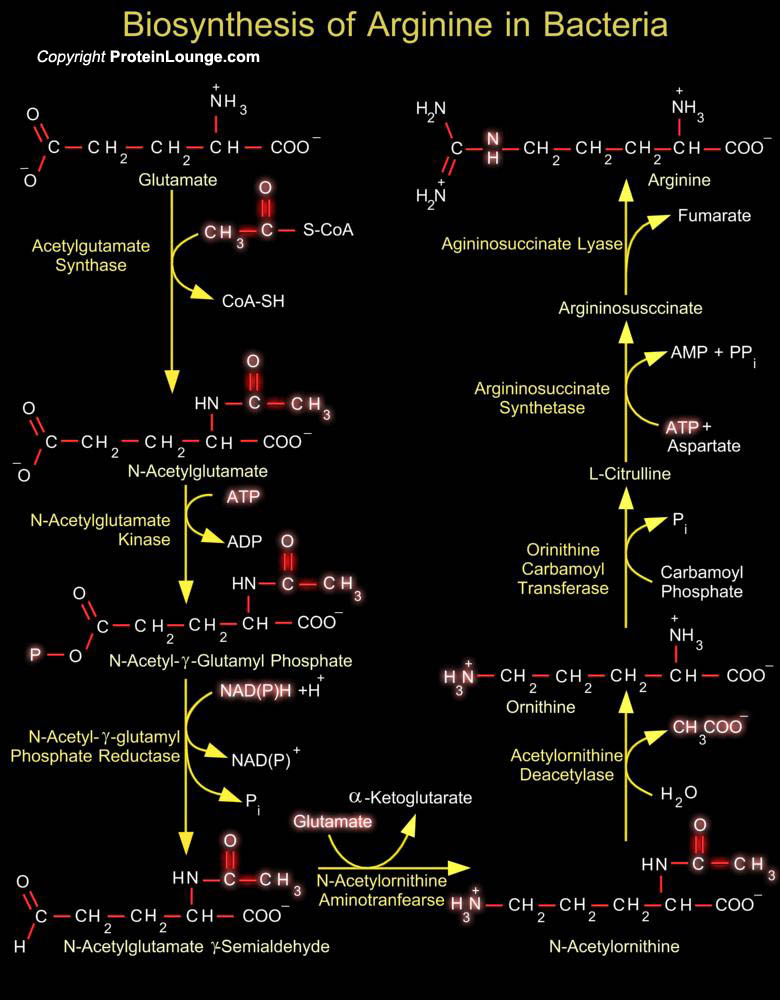
In bacteria, biosynthesis of arginine proceeds from glutamate in eight enzymatic steps initiated by the acetylation of glutamate by N-Acetyl Glutamate Synthetase. The N-Acetylated intermediates lead to ornithine. The synthesis of ornithine, like that of proline, involves the activation and reduction of the 5-carboxyl group of glutamate. In prokaryotes the pathway of arginine biosynthesis follows two alternative patterns which differ by the strategies used for the removal of the acetyl group and for the control of the metabolite flow along the pathway. Enterobacteriaceae and Bacillaceae use a linear pathway in which the formation of ornithine from N-Acetylornithine is mediated by the hydrolytic enzyme N-acetylornithinase (Ref.1). In these organisms, acetyl glutamate[..]
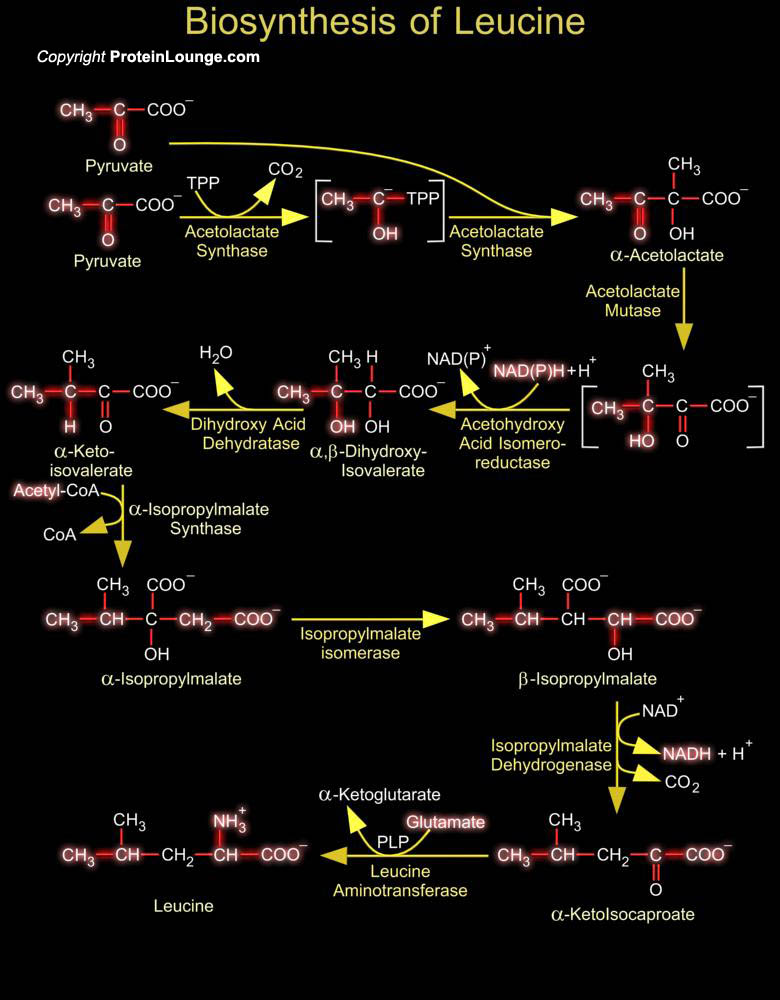
Isoleucine is essential amino acid, only synthesized in plants and bacteria, and required in the diet by animals. In proteins, the hydrophobic Isoleucine side-chain tends to reside with other hydrophobic residues in the interior of globular proteins or in transmembrane domains. Isoleucine biosynthesis begins with the common metabolic intermediate Pyruvate, the endpoint of glycolysis. The first step in Isoleucine biosynthesis requires TPP (Thiamine Pyrophosphate) to form a carbanion intermediate. This intermediate undergoes decarboxylation to produce a stabilized anion of Hydroxyethyl-TPP (HET-PP), which acts as a nucleophile on the Alpha-keto group of a second molecule of Pyruvate or Alpha-ketobutyrate, releasing TPP and Acetolactate or Acetohydroxybutyrate. Another[..]
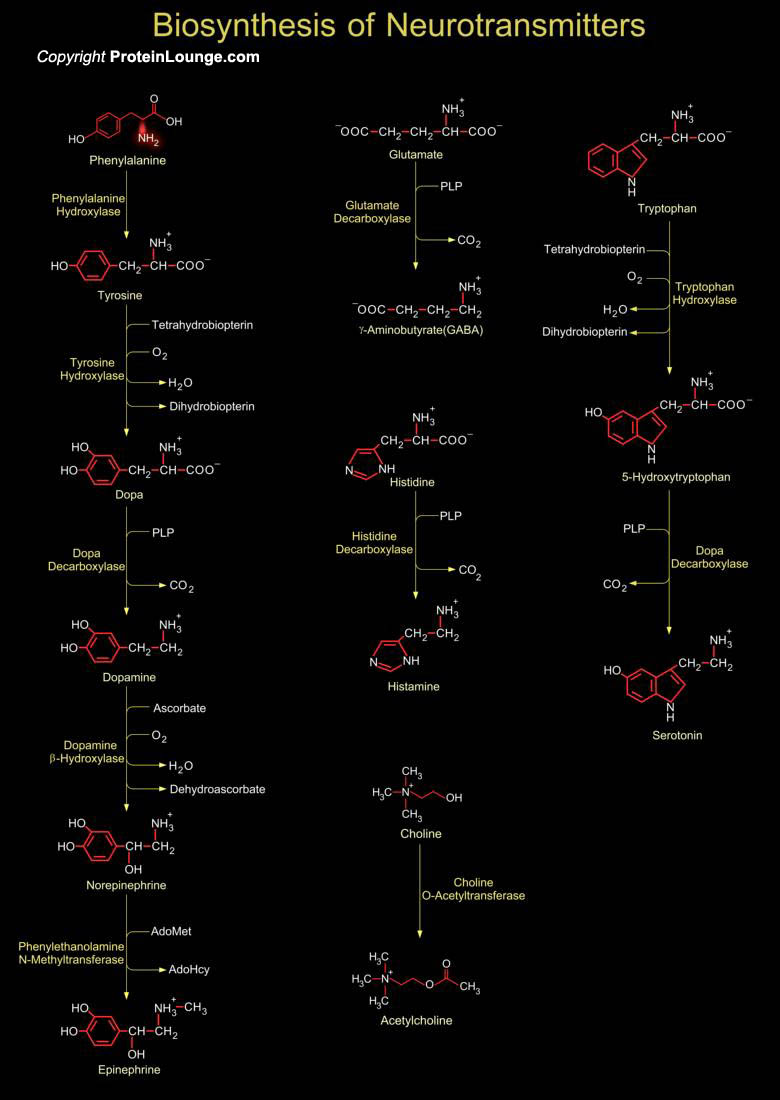
For neuronal signal transduction, the presynaptic cell synthesizes neurotransmitters that then traverse the synaptic cleft. Neurotransmitters are signaling molecules used by neurons to communicate across chemical synapses. The receptors for neurotransmitters include GPCRs (G-Protein Coupled Receptors) and ligand-gated ion channels. The biogenic amines are neurotransmitters derived from amino acids, and include Dopamine, Epinephrine, GABA, Histamine and Serotonin. For each of these, decarboxylation of an amino acid is a key step. Amino acid decarboxylases are PLP-Schiff base with the substrate so as to stabilize the C-alpha carbanion formed upon C-alpha-COO- bond cleavage. Formation of GABA and Histamine are one step processes. GABA (Gamma-aminobutyric acid) is[..]
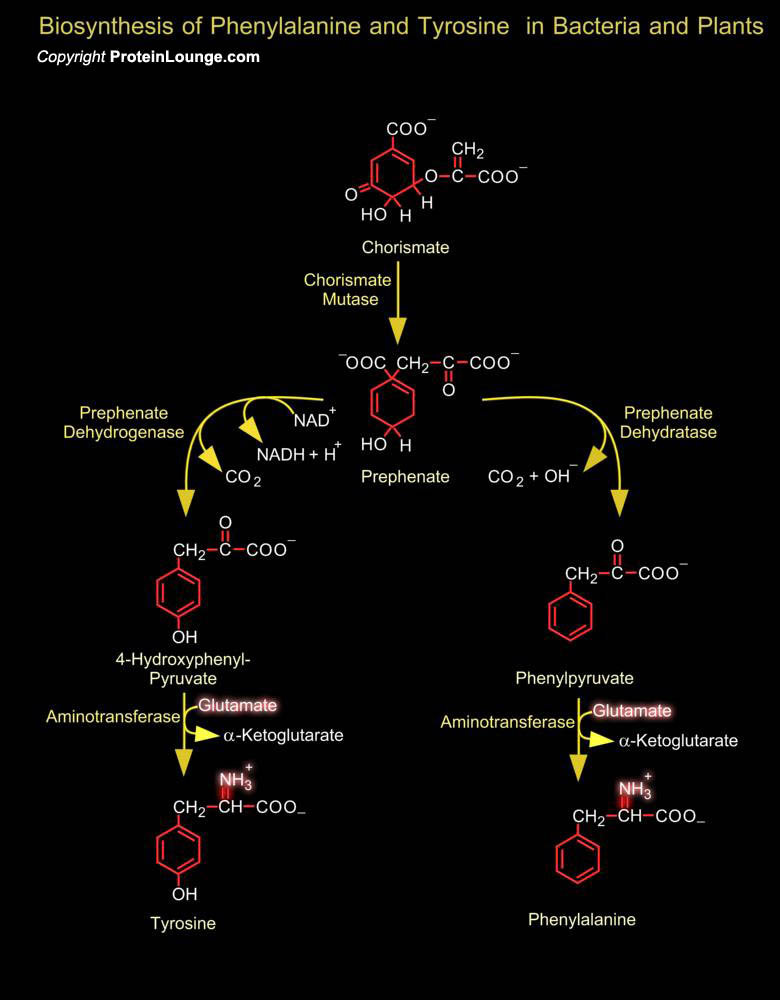
Chorismate is a branch point for different pathways leading to Phenylalanine and Tyrosine. A mutase reaction yields Prephenate, which undergoes either a DehydrataseDecarboxylase or a reductionDecarboxylase reaction (in some bacteria) resulting in aromatization, the oxo analogues of phenylalanine and tyrosine obtained in this way are then converted into the respective amino acids by transamination. In chloroplasts of higher plants, Prephenate is first transaminated to Arogenate, while the DehydrataseDecarboxylase reactions take place afterwards. Mammals obtain tyrosine from Phenylalanine by a hydroxylation reaction catalyzed by phenylalanine 4-monooxygenase, which uses Tetrahydrobioperin as a hydrogen donor. The reduced Tetrahydrobioperin is regenerated by NAD (P)H,[..]
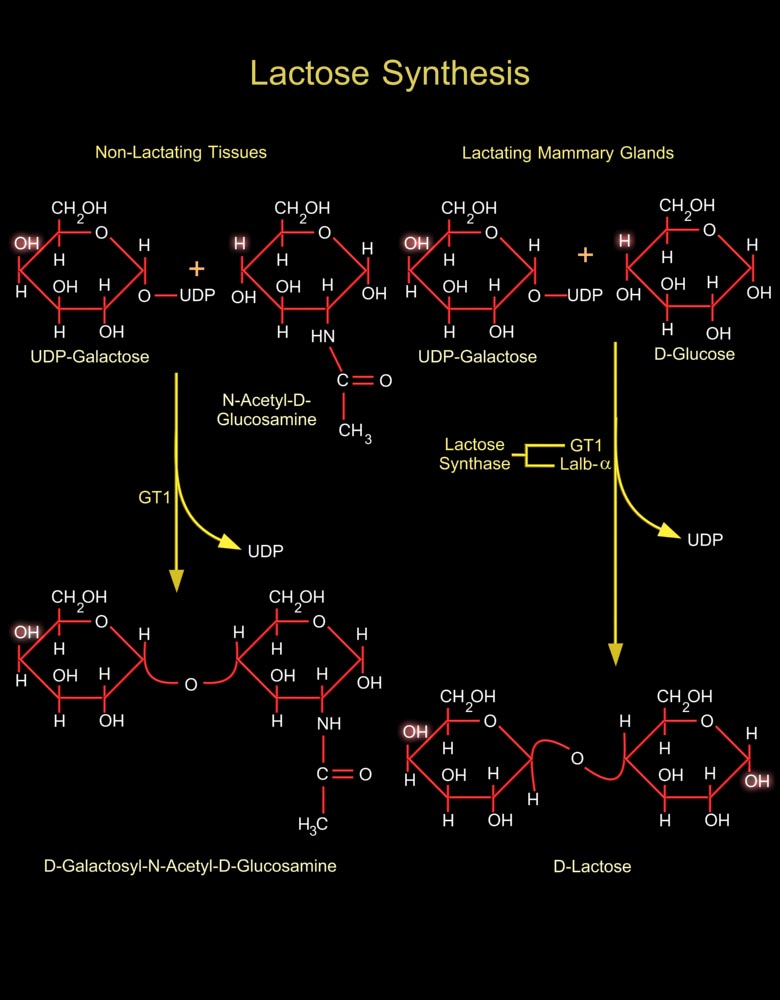
Lactose (or D-Lactose) is a disaccharide composed of Galactose (or Galactose) and Glucose (or D-Glucose). It occurs only in milk. It is the primary carbohydrate in milk of most species. Lactose is synthesized in mammary glands. Two Glucose molecules are required for each Lactose molecule synthesized. One Glucose is converted to UDP-Glucose (Uridine Diphosphate-Glucose), which in turn is converted to one UDP-Galactose (Uridine Diphosphate-Galactose) by GALE (UDP-Galactose-4-Epimerase) (Ref.1). Another Glucose molecule is used for Lactose synthesis without modification. Glucose passes across the Golgi apparatus membrane into the Golgi apparatus lumen by GLUT1 (Glucose Transporter-1). The presence of GLUT1 on the Golgi apparatus membrane apparently is specific to the[..]
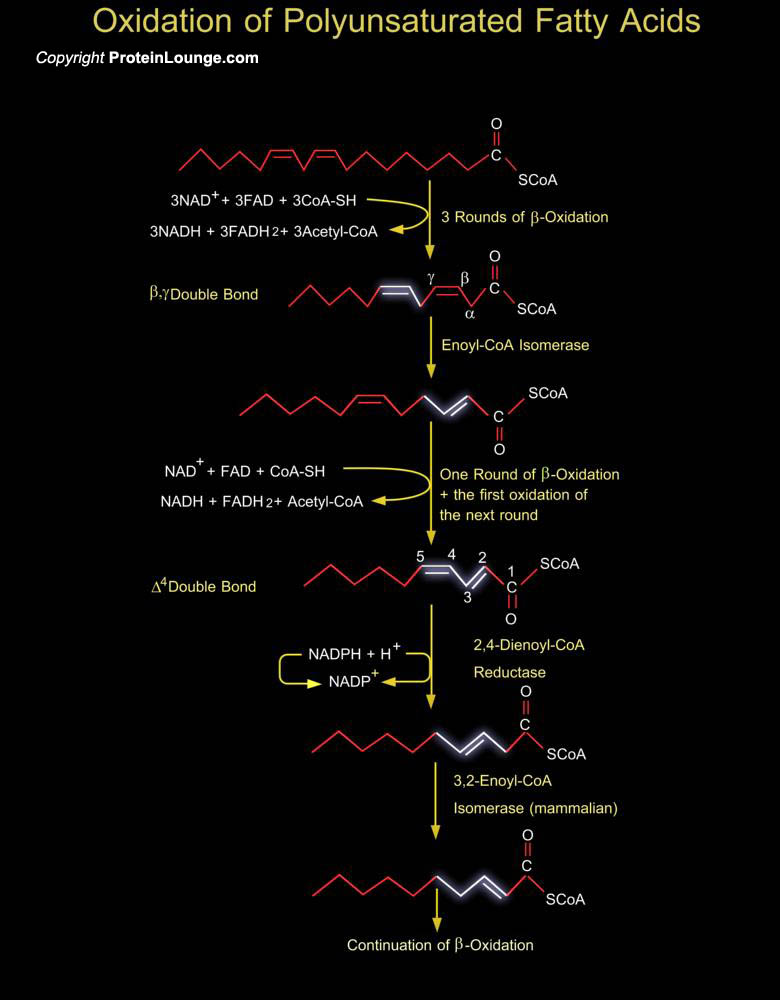
Unsaturated fatty acids are Beta-oxidized in the normal pathway as far as possible. However, polyunsaturation or unsaturation at odd positions produces a molecule that the major pathways cannot utilize as a substrate. To solve this problem, a number of enzymes exist in the peroxisome to convert these molecules to appropriate substrates which can be shuttled into the normal pathway. Peroxisomes are capable of oxidizing a variety of substrates including polyunsaturated Enoyl-CoA esters. The Beta-Oxidation of unsaturated Enoyl-CoA esters in peroxisomes, and also in mitochondria, is not just chain-shortening but also involves the metabolizing of pre-existing carbon-to-carbon double bonds. In addition to the enzymes of the Beta-Oxidation spiral itself, this metabolism[..]

